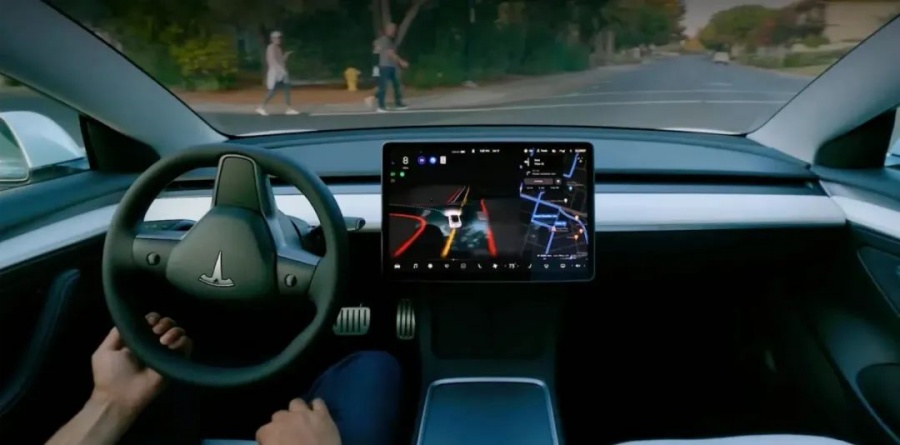
On April 14, 2024, Tesla CEO Elon Musk released a major news on the X platform, announcing that the company will soon launch a "universal, pure AI fully autonomous driving (FSD) solution." This statement marks an important step forward in the field of autonomous driving technology and also brings new potential for change to the industry.
In this new technology, Tesla will rely entirely on cameras, independently developed AI chips and AI software without the need to use other sensors such as lidar. This decision continues Tesla's consistent "pure vision" philosophy, trying to use only cameras to deal with complex driving scenarios by simulating human vision and decision-making processes.
"This is the first time that fully autonomous driving will soon usher in a universal, pure AI solution." This statement not only demonstrates Tesla's technological ambitions in the field of AI, but also creates new expectations for the future of autonomous driving.
Tesla's AI chips are specially designed to process massive visual data, combined with neural network-driven software systems, with the goal of providing higher security and greater versatility. This technology route, although ambitious and widely praised, is accompanied by controversy, especially on security issues. Tesla's FSD (fully autonomous driving) system has been questioned by regulators and the public for frequent accidents, but Musk insists that FSD is far safer than human drivers.
At present, competition in the field of autonomous driving is becoming increasingly fierce. Competitors such as Waymo and Cruise use lidar and multi-sensor fusion solutions, which is in sharp contrast to Tesla's vision path. If Tesla successfully launches this universal FSD solution, it will have the potential to reshape the autonomous driving industry and drive the company's plans for self-driving taxis.
Musk has previously stated that Tesla is expected to launch driverless taxi services in Austin in June 2025, and this plan may become an important measure for Tesla to further promote the popularization of autonomous driving technology.
Although Tesla's latest statement injects a booster into its vision of autonomous driving, safety and regulatory issues remain major challenges it faces. Experts pointed out that the performance of pure vision solutions in extreme weather and complex road conditions still needs to be verified, especially in rainy and snowy weather and night driving, the stability and reliability of the camera have not been fully tested. In addition, regulatory requirements for autonomous driving technology around the world are becoming increasingly stringent. How Tesla responds to these challenges will determine whether its technology can be deployed smoothly and gained wide acceptance.
Tesla's latest progress undoubtedly brings new expectations to the integration of global AI and the automotive industry. With the continuous advancement of autonomous driving technology, future cars may become smarter and more adaptable. For industry observers and technology enthusiasts, Tesla's fully AI-powered fully autonomous driving solution will be one of the most noteworthy technological breakthroughs in the next few years. Although the challenges remain, Tesla's vision is expected to revolutionize the global transportation landscape if it overcomes safety and regulatory issues.